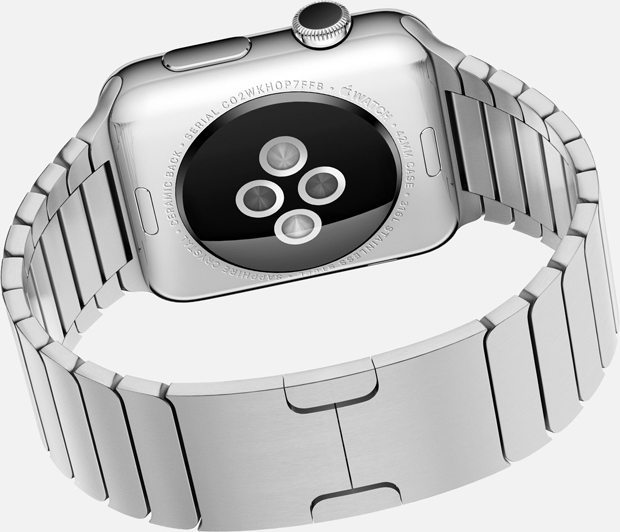Sensor Reliability Issues Sidelined Advanced Health Monitoring On Apple Watch
The Apple Watch is one of the most highly anticipated consumer electronics device launches set for this spring. Although Apple sought to bring the smartwatch to consumer in early 2015, Apple CEO Tim Cook clarified last month that the device will actually land sometime in April.
We already know quite a bit about what the Apple Watch can do. We know that it will mainly serve as a secondary display for your iPhone (which will power most of its functions) and will display incoming notifications, quickly give you easily digestible bits of information (stock quotes, weather, calendar events, etc.), track your heart rate, and provide fitness monitoring. Oh, and by the way, it also happens to tell time -- one of the few functions that it can carry out without being wirelessly tethered to your iPhone.
The Wall Street Journal is now giving us a bit of insight into what had to be left out when it comes to the Apple Watch’s long gestation period, during which it was referred to a “black hole” that sucked up company resources. Apple had originally planned for its first smartwatch to incorporate an even larger array of sensors aimed at health monitoring.
Sensors that monitor skin conductivity would have allowed for accurate heart rate monitoring via electrocardiogram. But early testing showed inconsistent results for subjects with hairy arms or dry skin. Apple also garnered inconsistent results from sensors used to detect blood pressure and blood oxygen levels.
And Apple also had to come to grips with how it would gather and display such information to customers. If Apple planned to give advice to its users based on the information captured via its sensors, it might have to answer to the U.S. Food and Drug Administration and other regulatory agencies.
As with any feature that is left out in order to bring a product to market in a timely fashion, its possible that the above functionality could make it into a second generation Apple Watch. And perhaps advances in battery technology could also allow for a device that can last longer than a day per charge and rely less on an iPhone for processing duties.


